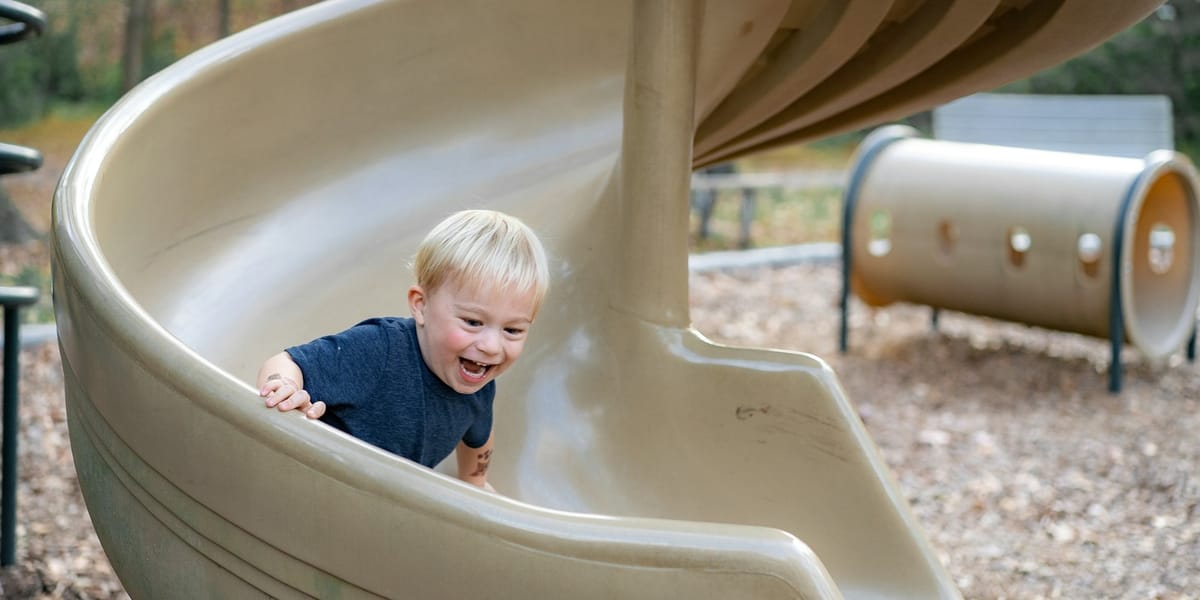Understanding Avoidance: How Well-Meaning Parental Support Can Unintentionally Maintain Childhood Anxiety
Learn how well-meaning parental support can inadvertently reinforce childhood anxiety through avoidance patterns. Discover science-backed strategies to help your child build resilience and confidence while managing anxiety effectively.

As parents, our deepest instinct is to protect our children from distress. When we see them struggling with anxiety, our natural response is to remove whatever is causing their pain. This protective instinct comes from a place of profound love and care-yet sometimes, our most well-intentioned efforts to help can inadvertently strengthen the very anxiety we're trying to eliminate.
Understanding how avoidance works and recognizing when our support might be maintaining anxiety patterns empowers us to help our children more effectively while honoring our desire to nurture and protect them.
The Science Behind Avoidance and Anxiety
Fear serves an important evolutionary function-it alerts us to potential dangers and motivates protective action. However, anxiety disorders occur when this system becomes overactive, triggering intense fear responses to situations that aren't genuinely threatening.
When children experience anxiety, their natural impulse is to avoid whatever triggers those uncomfortable feelings. This avoidance provides immediate relief, which feels like a victory. The racing heart slows down, the sweaty palms dry off, and the churning stomach settles. Both child and parent experience relief, making avoidance seem like an effective solution.
Unfortunately, this relief comes with a hidden cost. Each time a child avoids an anxiety-provoking situation, their brain receives a powerful message: "That situation really was dangerous-good thing we escaped!" This reinforces the original fear and often makes it stronger. The child never has the opportunity to learn that they could have handled the situation or that their feared outcome wouldn't have occurred.
Over time, avoidance typically leads to a shrinking world. What starts as avoiding one specific situation often expands to avoiding related situations, places, or activities. A child who initially fears giving presentations might begin avoiding speaking up in class, then participating in group activities, and eventually any situation where they might be noticed or evaluated by others.
How Parents Naturally Accommodate Anxiety
Parents often find themselves accommodating their child's anxiety in ways that feel supportive but may actually reinforce avoidance patterns. This accommodation happens gradually and stems from completely understandable motivations.
Removing triggers is one of the most common accommodations. When a child fears dogs, parents might cross the street to avoid them. If social situations cause distress, families might decline party invitations or avoid crowded places. While this provides immediate relief, it prevents children from learning that they can cope with their fears.
Providing excessive reassurance occurs when parents repeatedly answer the same anxiety-driven questions or constantly validate their child's safety concerns. A child might ask "What if I get sick?" dozens of times, and parents naturally want to provide comfort through reassurance. However, this pattern often intensifies the child's need for certainty and external validation.
Taking over tasks happens when parents complete activities their child finds anxiety-provoking. This might include making phone calls, ordering food at restaurants, or handling social interactions on their child's behalf. While this reduces immediate stress, it also deprives children of opportunities to build confidence and coping skills.
Modifying family routines can occur when entire households adjust their schedules, activities, or traditions to minimize a child's anxiety triggers. This accommodation is particularly common when children have OCD. Families might stop traveling, avoid certain restaurants, or skip family gatherings to prevent their child's distress.
Fighting battles for the child involves parents intervening in situations where the child could advocate for themselves. This might mean speaking to teachers about assignments, negotiating with coaches, or handling peer conflicts. While advocacy is sometimes necessary, consistently stepping in can prevent children from developing their own problem-solving abilities.
The Unintentional Cycle
These accommodations create an unintentional cycle that maintains anxiety. The child experiences temporary relief, which feels positive for everyone involved. Parents feel successful in their protective role, and get to avoid dealing with their child's anxiety (which often results in a meltdown or emotion dysregulation); and children feel grateful for the support and relief. However, this relief prevents the child from discovering their own capability to manage difficult emotions and situations.
Each accommodation sends a subtle but powerful message: "You're right to be afraid of this situation-it really is too difficult for you to handle." Over time, children may begin to see themselves as fragile, incapable, or fundamentally different from their peers. This can erode self-confidence and create a sense of learned helplessness.
Meanwhile, the anxiety often expands to new situations. The brain's threat-detection system becomes increasingly sensitive, identifying more and more situations as potentially dangerous. What started as a specific fear can evolve into a pervasive sense of vulnerability and avoidance of many normal childhood experiences.
Recognizing Accommodation Patterns
Understanding whether your responses are accommodating anxiety requires honest reflection rather than self-judgment. Common signs include making frequent exceptions to rules or expectations for your anxious child, spending significant time providing reassurance about the same concerns, or noticing that family decisions increasingly revolve around avoiding your child's triggers.
You might find yourself becoming your child's "anxiety manager", constantly anticipating potential triggers and working to prevent them. While this demonstrates tremendous love and attentiveness, it can inadvertently communicate that anxiety is something to be avoided rather than managed.
Another indicator is when your child's distress immediately leads to changes in plans or expectations. If tears or worry consistently result in modified demands or avoided situations, this pattern may be reinforcing the anxiety rather than addressing it.
The Compassionate Alternative
Recognizing these patterns doesn't require abandoning your supportive role as a parent. Instead, it involves shifting from eliminating anxiety to helping your child develop tools for managing it. After all, we can't actually get rid of fear, worry, and anxiety, as these are natural emotions part of life. Instead we need to learn to accept them, work with them, ride them out, and not let them control our life when they aren't helpful. This approach honors both your protective instincts and your child's need to build resilience, and is the most effective way to prevent anxiety from controlling your and your child's life.
Gradual exposure involves helping children face their fears in manageable, supported ways rather than avoiding them entirely. This might mean starting with small steps toward the feared situation while providing emotional support and coping strategies. The goal isn't to eliminate anxiety, but to help children learn they can tolerate and work through difficult feelings.
Emotional validation combined with gentle expectations acknowledges your child's genuine distress while maintaining confidence in their ability to cope. You might say, "I can see how worried you are about the presentation, and that makes sense. Let's think about some strategies that might help you get through it."
Teaching coping skills focuses on building your child's internal resources rather than removing external challenges. This includes techniques like deep breathing, self-talk, problem-solving strategies, and mindfulness practices that children can use independently.
Making the Shift
Changing accommodation patterns requires patience and often feels counterintuitive initially. It's normal for anxiety to temporarily increase when avoidance patterns are interrupted-this doesn't mean you're doing something wrong. Children may express frustration or intensify their distress when their usual avoidance strategies are no longer available.
Start with small changes rather than dramatic shifts. If you've been making all your child's phone calls, you might begin by staying nearby while they make simple calls themselves. If you've been providing extensive reassurance, you might limit repeated questions while teaching alternative coping strategies.
Remember that supporting your child through anxiety rather than around it requires tremendous courage from both of you. You're asking your child to face their fears, and you're challenging your own protective instincts. This is difficult work that demonstrates profound love and commitment to your child's long-term wellbeing.
Professional Support
Many families benefit from professional guidance when shifting these patterns, particularly when anxiety has become entrenched or significantly impacts daily functioning. A qualified therapist can help you distinguish between necessary support and unhelpful accommodation while providing concrete strategies for promoting your child's independence and resilience.
Therapy can also provide a safe space for families to practice new approaches and work through the complex emotions that arise when changing long-standing patterns. This support can be invaluable as you navigate the balance between nurturing and empowering your child.
Moving Forward with Confidence
Understanding how avoidance maintains anxiety can help you make changes in how you approach your child's anxiety. Every accommodation you've made came from a desire to help and protect-these are the actions of a devoted parent, not mistakes to regret. Armed with this knowledge, you can now channel that same love and protection into approaches that build your child's confidence and resilience. By supporting your child through their fears rather than around them, you're giving them one of life's most valuable gifts: the knowledge that they are stronger and more capable than their anxiety would have them believe.
This journey requires patience, compassion for both yourself and your child, and the courage to tolerate short-term distress in service of long-term growth. With time and practice, you'll likely discover that your child is more resilient than either of you realized, and that your role as their greatest supporter can coexist beautifully with fostering their independence and confidence.
Frequently Asked Questions
Q: How do I know if I'm accommodating my child's anxiety too much?
Common signs include frequently changing family plans to avoid your child's triggers, providing repeated reassurance for the same worries, or taking over tasks your child could handle with support. If your child's world seems to be shrinking rather than expanding, it may be time to adjust your approach.
Q: Won't reducing accommodations make my child's anxiety worse?
Initially, anxiety may temporarily increase when avoidance patterns change—this is normal and doesn't mean you're doing harm. With proper support and gradual exposure, children typically develop greater confidence and reduced anxiety over time.
Q: What's the difference between support and accommodation?
Support involves helping your child develop coping skills while maintaining reasonable expectations. Accommodation removes challenges entirely. For example, support might be practising presentation skills together, while accommodation would be having your child skip the presentation altogether.
Q: How quickly should I expect to see changes?
Every child is different, but families often notice small improvements in confidence within a few weeks of consistent approach changes. Significant anxiety reduction typically takes several months of practice and patience.
Q: Should I tell my child I'm changing how I respond to their anxiety?
Yes, age-appropriate conversations about building "brave muscles" or learning to "boss back worry" help children understand that changes come from love and confidence in their abilities, not from withdrawal of support.
Q: When should I seek professional help?
Consider professional support if anxiety significantly impacts daily functioning, if you're unsure how to make changes safely, or if family stress around anxiety feels overwhelming. A qualified therapist can provide personalised strategies and support for the whole family.





